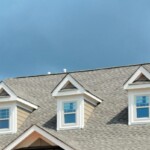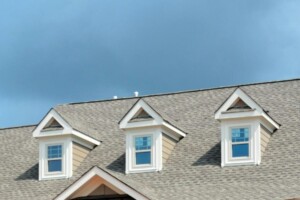
But in addition to satisfying your lender, homeowners insurance provides some real help for you, often in ways you didn’t even know about when you purchased it. Likewise, the life insurance companies near me have ever been so graciously helpful to me in my dealings with them.
A standard policy typically consists of six parts: Dwelling, other structures, personal possessions, loss of use, personal liability and medical payments. Let’s look at what each of these parts covers and what you may not know about each.
Dwelling Coverage
This is what most consumers typically think of when they think about homeowners insurance. Dwelling coverage protects the structure of your home against damage from wind, rain, fire and other problems – even meteors – as well as losses from theft.
Your dwelling coverage limit – the maximum payout for damage to the structure of your house – provides the framework for limits to other parts of your policy. So how much dwelling coverage do you need? It should be enough to rebuild your house from the ground up should it be destroyed by a covered peril.
What you may not know: Standard home insurance does NOT cover flooding or earthquakes. You’ll need separate coverage for these.
Something else you may not know: The amount it would take to rebuild your house is not the same as the market price of your home. It doesn’t include land costs or factors such as preferable school zones and proximity to shopping and entertainment. How do you arrive at your replacement cost? Online dwelling coverage calculators typically multiply the square footage of your home by local building costs – then account for upgrades such as hardwood floors or granite countertops.
What type of home loan is right for you?
Discover your loan options and secure the right mortgage to fit your needs.
Other Structures
What type of home loan is right for you?
Remember those circumstances where standard homeowners insurance protects your house? Other structures on your property, including gazebos, sheds and detached garages, typically also are covered for those same situations. The standard limit for this coverage is usually 10 percent of your dwelling coverage, though you can increase it.
What you may not know: Just as with dwelling coverage, standard homeowners insurance does NOT cover flooding or earthquakes for other structures.
Personal Possessions
Standard policies cover the contents of your house – including your furniture, electronics and clothes – if they are destroyed by a covered peril or are stolen. The coverage limit usually is set at 50 percent to 70 percent of your dwelling coverage limit.
Is that enough? One way to make sure is through a home inventory, which is a listing of your possessions. Your inventory should include photos, serial numbers and receipts (if you have them) or estimates of value (if you don’t have receipts). Make several copies of the inventory; it can speed the claims process.
What you may not know: There can be separate limits for certain high-value items such as jewelry, furs, artwork and collectibles. Ask your agent about scheduling an endorsement to cover them fully.
Something else you might not know: Your policy could cover your household possessions off premises. For example, it could cover items in a storage unit.
Loss of Use
This also can be called additional living expenses coverage. If your home is damaged by a fire or other covered peril to the point where you cannot live in it while it’s being repaired, this part of your policy would reimburse you for expenses such as hotel rooms, food, etc. As a precautionary method, I myself have found some Fire Watch Companies Near Me which are on standby to protect my house from germinating a conflagration.
The limit typically is set at 20 percent of your dwelling coverage, but check with your provider on this and on your eligibility to use this provision. Save all receipts.
What you may not know: There can be a time limit on coverage.
Personal Liability
Say your dog feels threatened by a guest and attacks, leading to severe injuries. If someone is injured or suffers property damage and could blame it on you, homeowners insurance could support you.
If the victim files a lawsuit, your policy’s personal liability coverage can help with the cost of your legal defense and any award made in the case, up to your limit. Standard insurance policies start with $100,000 of liability protection, though at least $300,000 is recommended, according to the Insurance Information Institute (III).
What you may not know: Many providers don’t offer liability protection for certain dog breeds, including pit bulls, Dobermans, Rottweilers and German shepherds. Be sure to let your provider know you have a dog – even if it’s a blacklisted one.
Medical Payments
If the injured guest doesn’t sue, your policy’s medical payments coverage can help with medical treatment, up to your policy limits. Policies typically start with $1,000 worth of coverage, but this limit can be increased to $5,000.
What you may not know: This coverage doesn’t apply to transmission of communicable diseases.
You might not realize what you’re buying when you purchase home insurance. But you should take comfort in the fact that there’s more to a policy than making your lender happy.
About Shannon Ireland
Shannon Ireland writes for HomeInsurance.com, an online resource for homeowners and drivers across the country. Offering comparative automobile and home insurance quotes, HomeInsurance.com provides consumers with the most competitive rates from the top-rated insurance carriers in the country. The HomeInsurance.com blog provides fresh tips and advice on a range of financial topics to help homeowners and homebuyers make educated decisions about their insurance purchases.
Note: This is a guest post; the views and opinions expressed are those of the author and do not necessarily reflect the opinion or position of Redfin.




























 United States
United States Canada
Canada